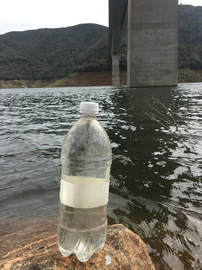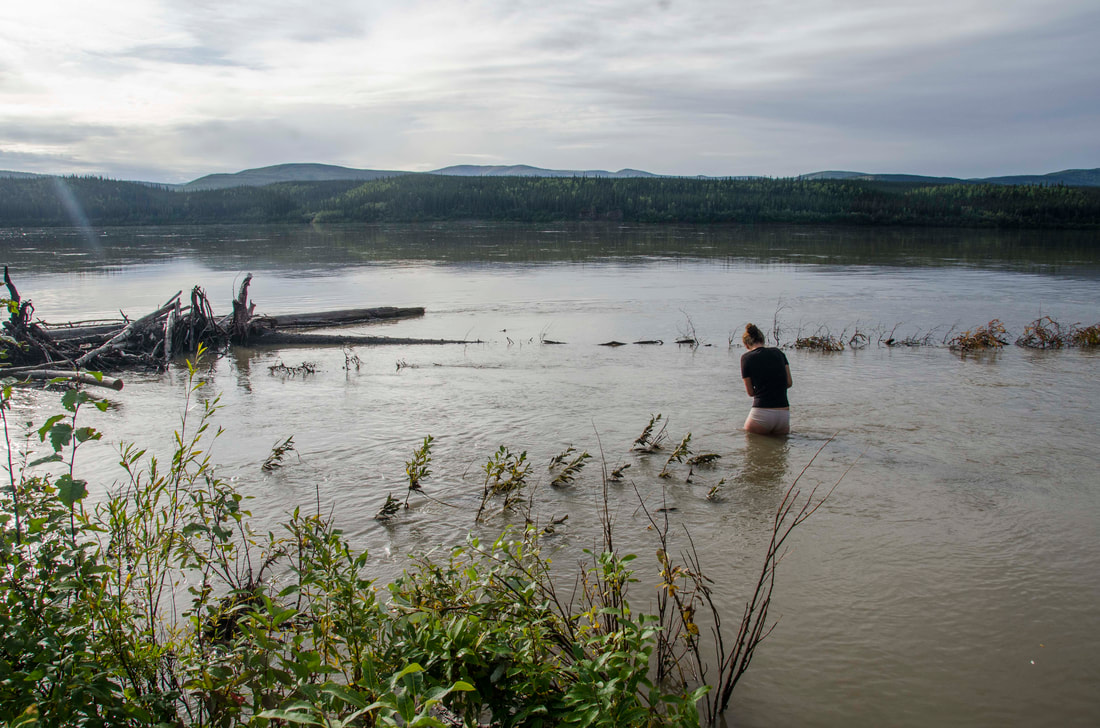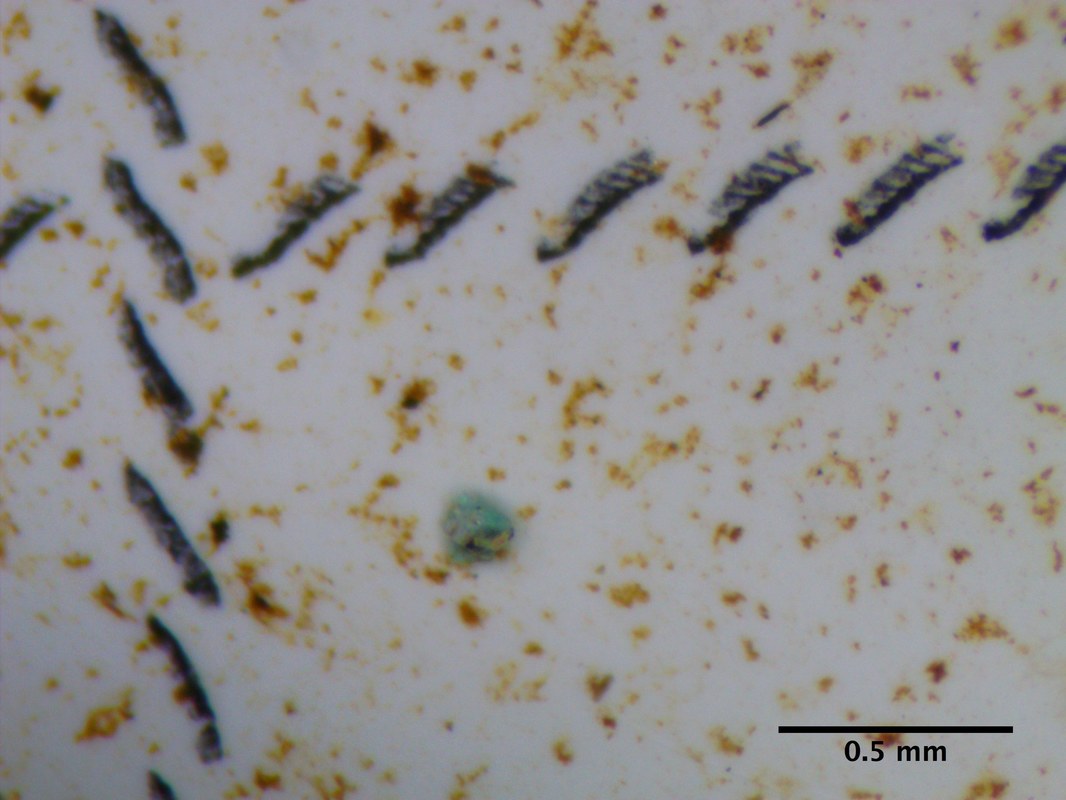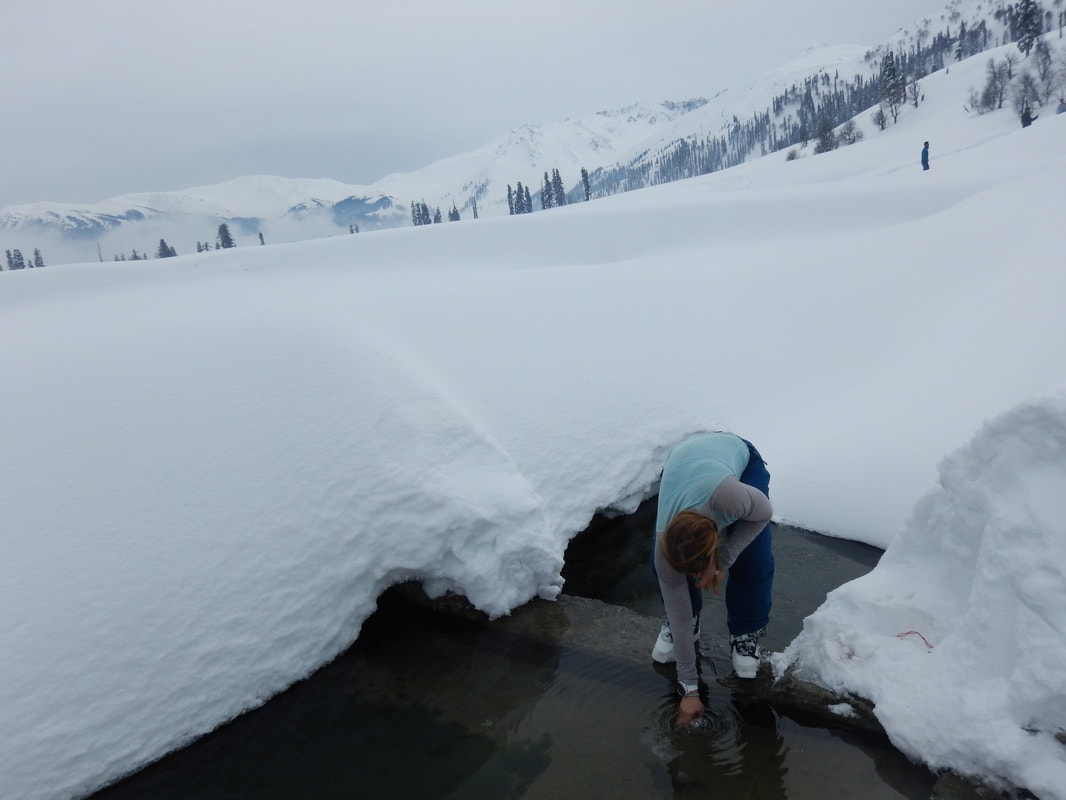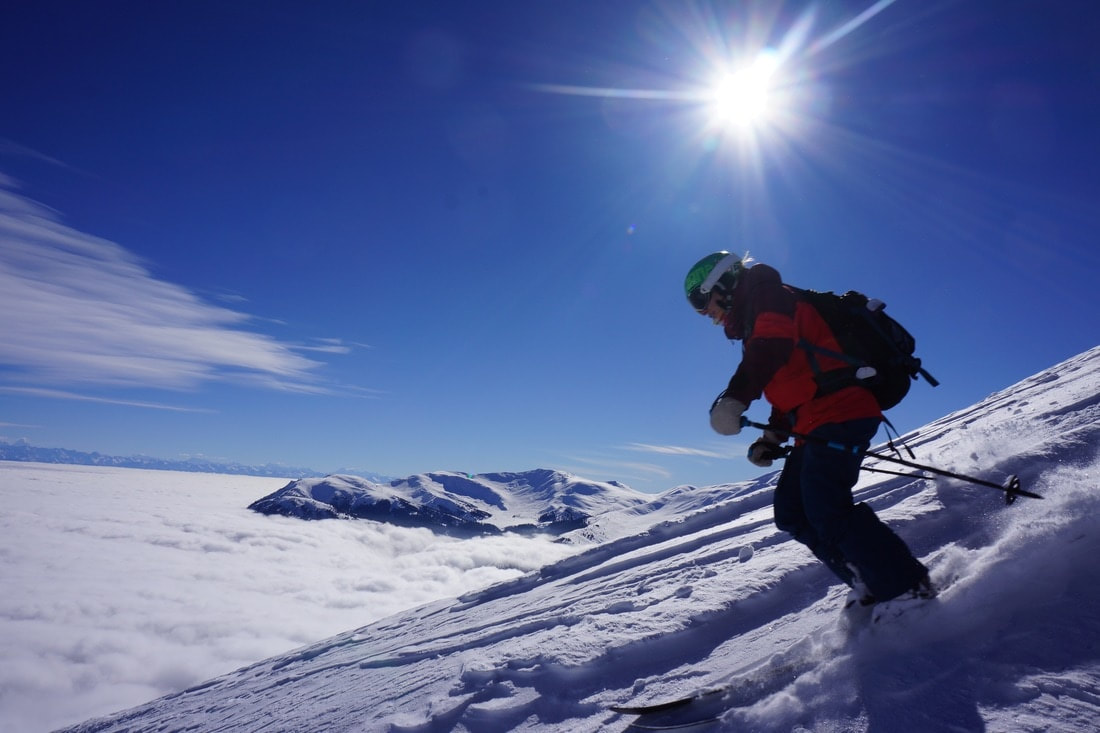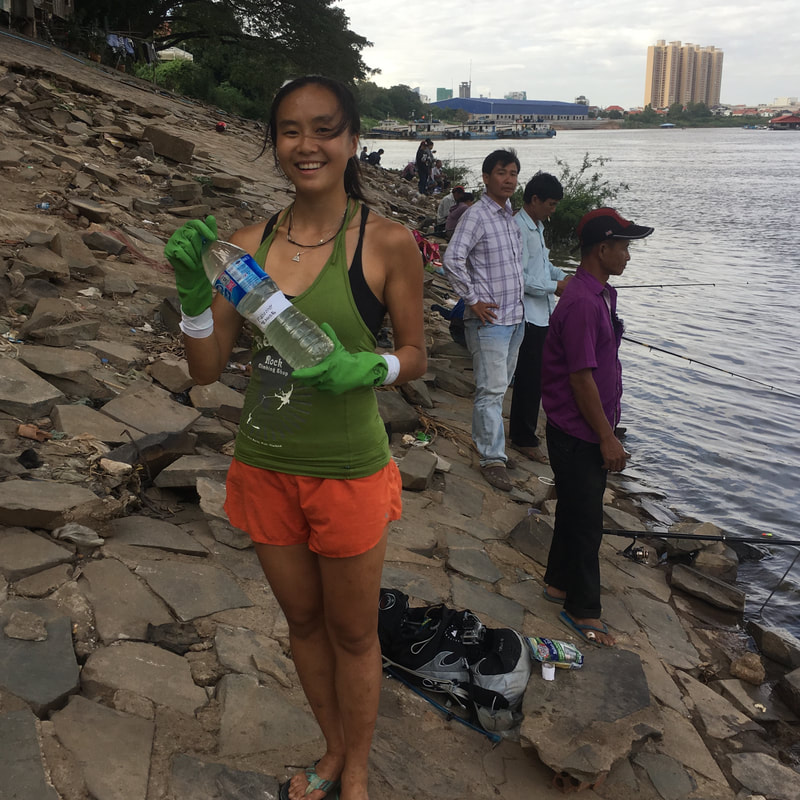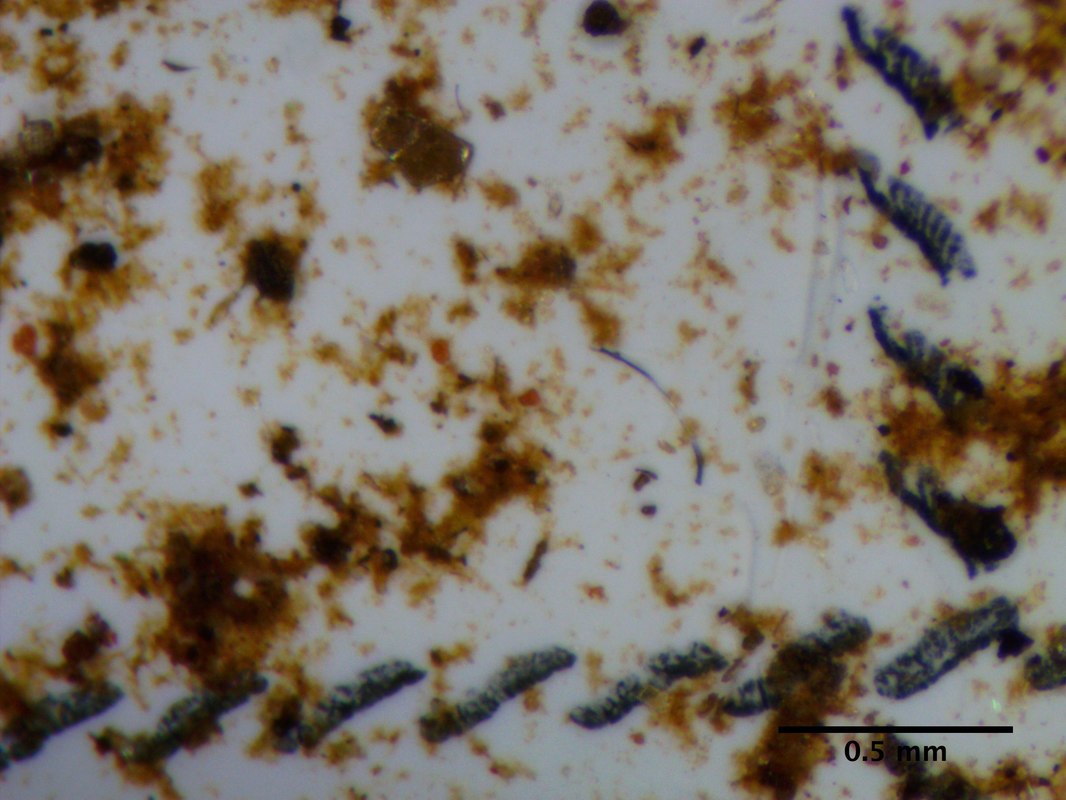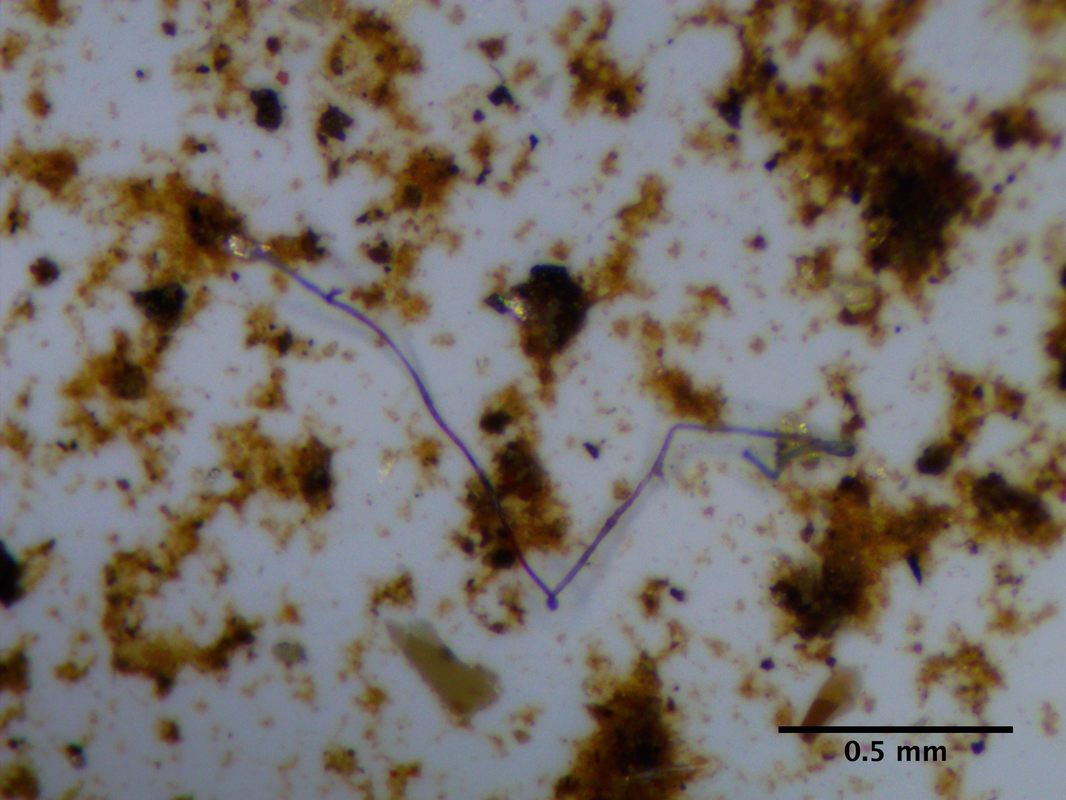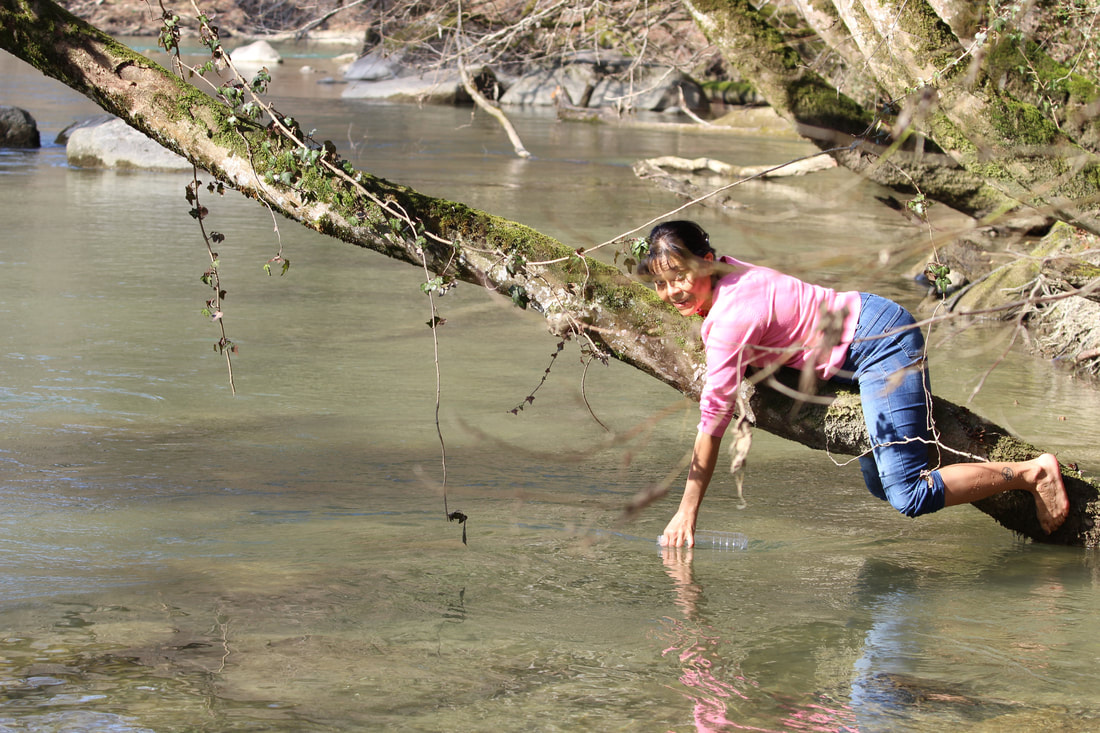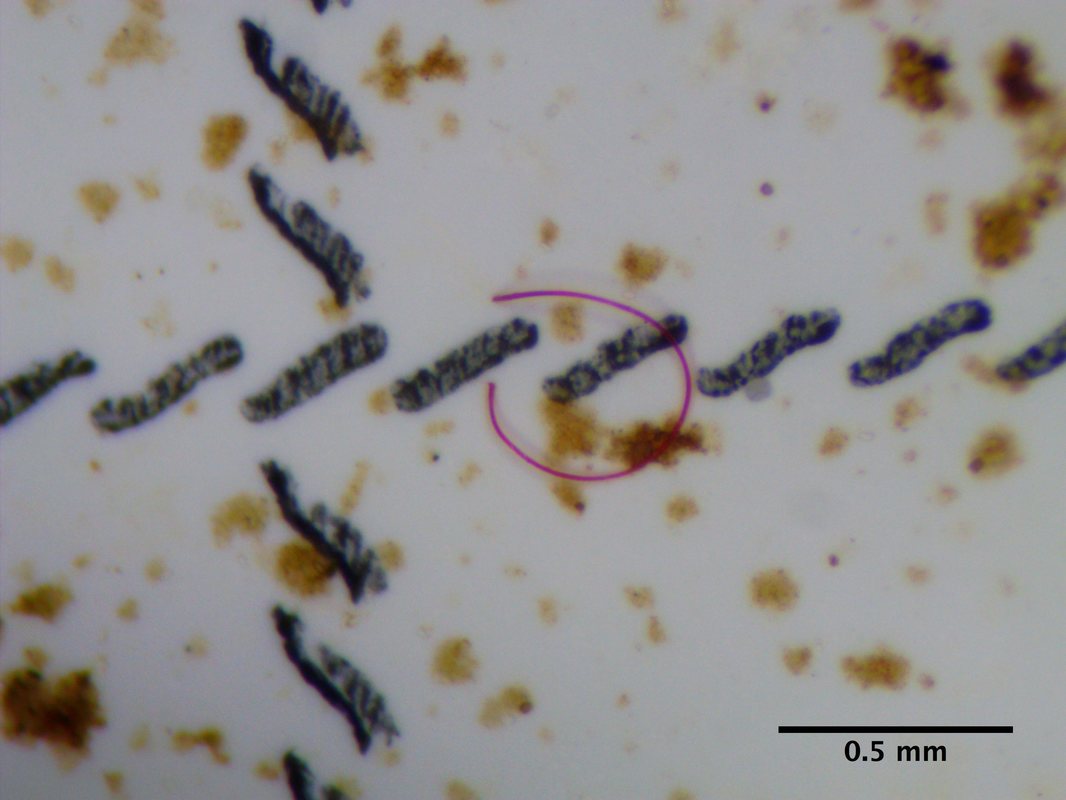Thank you for collecting water samples with the Adventure Scientists’ Global Microplastics Initiative. Your efforts are helping us understand the distribution and concentration of microplastics in the world’s waters, while also building one of the largest microplastics datasets ever. Principal Investigator Abby Barrows has processed your microplastics samples, and we’re excited to share the results of your work!
First, let us briefly explain the process your samples go through in the lab. Once Abby receives your sample, she vacuum pumps each sample over a filter. After the filter has dried, Abby uses a microscope at 45x magnification to look for pieces of microplastic that are less than 5 millimeters. Moving along the grid lines, the filter is systematically counted, with each plastic piece categorized based on shape (round, microfiber, other) and color (blue, red, black, transparent/white, other). The final count for the sample is divided by the sample volume. This calculation helps to standardize the results, as incoming water samples are often not exactly one liter of water.
We categorize microplastics using these descriptions:
- Microplastic: a microplastic is any piece of plastic smaller than 5mm in size. We search for and count these small pieces of plastic in our samples. Microplastics can be found in a variety of shapes, typically dependent on the origin of the piece.
- Round: a spherical or circular piece
- Fragment: a fragment of plastic is any non-linear, non-round piece. Generally they have jagged edges from breaking off larger pieces of plastic, but can also have smooth edges. Fragments can be three dimensional or two dimensional, such as a fragment of plastic film.
- Filament or Fiber: Filaments or fibers (also called microfibers) are pieces of microplastic originating from textiles. They are long, thin and stringlike. Typically, plastic filaments are consistent in shape and size along their length. They are the most abundant type of microplastic we find in our samples.
To date, 1820 of 2534 samples analyzed (72%) contained microplastics. 86% of marine samples contained plastic, while 47% of freshwater samples contained plastic. 24,814 pieces of microplastic have been counted. On average, we are finding about 8 plastic pieces per liter of water. You can check out the number of pieces per liter in each individual sample on the map on our microplastics page.
Note: In the results listed here, we report the total microplastic pieces found in all of your samples. However, for many of our calculations and for the online map, we report the total pieces per liter. As such, your microplastic total on the map may appear different from your total below.
Also, please let us know if your sample isn’t located in the correct place on the map, so that we can fix it for you.
|
Chydesirae
Cheyenne Dolin California Cheyenne collected three samples which contained three pieces of microfibers: one blue, one black, and one transparent. Cheyenne has a B.A. in literature, and is an avid hiker who’s passionate about environmental protection. She collected her samples from the Calaveras, Mokelumne, and Stanislaus Rivers. |
Anthony Semeraro
Washington
During their hike to Six Mile Camp and Bachelor Creek on the Downey Creek trail, Anthony and Xenia collected one sample, which contained one transparent fiber. Anthony is an outdoor enthusiast, photographer, and geology student at Western Washington University. Xenia is a lover of nature, a singer, and an environmentalist. She cares deeply for the preservation and protection of the natural world.
Icy Skate Ski
Jessie Kay
Montana
Jessie collected two samples while on a skate ski outside of Bozeman, which contained a single purple filament. Jessie is the Adventurer Coordinator at Adventure Scientists. When not out exploring the Greater Yellowstone by bike or skis, Jessie can be found refueling for her next adventure by consuming plenty of burritos and coffee.
Corinne Gardner
Chile
Corinne collected three samples in Chile, which contained two blue filaments. A recent architecture graduate at the University of Michigan, Corinne left the US to work as a park guide in Parque Omora, Puerto Williams, and Isla Navarino in Patagonia, Chile. She is passionate about expedition coordination, outdoor education, and land conservation.
Learn more about Corinne’s adventures on our Field Notes blog.
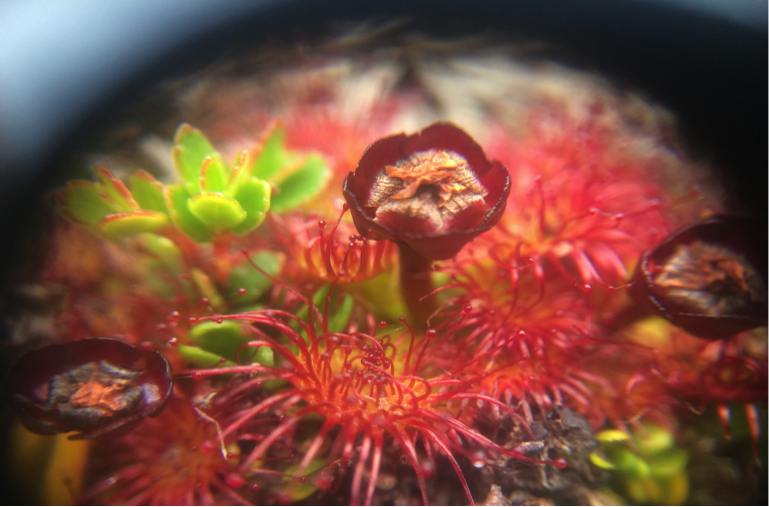
Life is GOOD Follow Us
Suzi and Lars Oud
Yukon, Canada
Suzi and Lars, with their children, Liva (age seven) and Tiuri (age nine) have traveled the world for the last seven years. A recent expedition of theirs involved canoeing 3000 kilometers (1864 miles) of the Yukon river from Whitehorse, Canada to Emmonak, Alaska. They were joined by their friends, Chris and Jane. The crew collected nine samples, in which five pieces of microplastic were found: three transparent, one purple, and one blue. You can learn more about Suzi, Lars, Liva, and Tiuri’s adventures on their blog, Life is GOOD Follow Us.
Meghan Elgan and Monique Dykman
Illinois
Meghan and her team have collected samples from the Ohio River, and are using the results to showcase microplastic pollution in their student workshops. They recently collected eight samples, which contained one black microfiber, one black filament, and one transparent filament. Meghan is an educational coordinator for Living Lands & Water based in Illinois. She received her B.S. in Wildlife Ecology from University of Wisconsin Steven’s Point.
Microplastics_VancouverBC_ChloeR
Chloe Reid
Vancouver, Canada
Chloe collected one sample which contained one transparent fiber. She is a recent biological sciences graduate from Simon Fraser University, and is a proud supporter of citizen science.
Noa’s Winter Boating
Noa Bruhis
Idaho
Noa collected two samples, which did not contain any microplastics. Noa works as an engineer developing research-grade environmental instrumentation. She is also a former whitewater raft guide and spends many weekends recreationally rafting.
Ono
Ono Kovacs
California
Ono collected two samples from the Merced River near Yosemite National Park, which contained one black fiber and one red fiber. Ono is an ecological economist who wrote her first thesis on plastic pollution and eliminating PET waste by applying a circular economy method. She is currently writing her human ecology graduate thesis on environmental justice issues in Mongolia, linked to air and water pollution, soil contamination, and mining.
Christian Shaw and Gordon Middleton
Florida
On their expedition in Florida, Christian and Gordon collected four samples in which a total of 23 microplastics were found. Eight of the microplastics were blue filaments, six were black filaments, three were green fragments, two were transparent fibers, two were light blue fragments, one was a red fiber, and one was an orange fiber. Christian is an avid waterman from New York, where he attended Cornell University to study sustainability and business. In 2014, he co-founded Plastic Tides – an environmental organization aimed at bringing awareness and finding solutions to marine plastic pollution. Christian’s lifelong goal is to combine his passion for watersports with environmental education in pursuit of a more sustainable future. Christian’s sampling partner, Gordon, is an adventure videographer. He has previously worked for the TV show Survivor, and founded Quiet Sun Productions in 2012.
Hannah Rasker
Montana
Hannah collected one sample on a hiking adventure in Sypes Canyon in Bozeman, in which no microplastics were found. Hannah is the Operations Coordinator at Adventure Scientists. A Bozeman native, Hannah has had her fair share of adventuring around Southwest Montana on foot, bikes, and skis. Her newest adventure companion, Oscar, is a one-year old poodle.
Marian Krogh
Kyrgyzstan
Marian, Gabby, Abby, and Josie went on a ski expedition to Kyrgyzstan, in which they flew into Bishkek and headed north to the Naryn region of the Tien Shen Mountain range. They explored various villages and stayed in yurts. The team collected one sample which contained two pieces of microplastic: one blue fiber and one transparent fiber.
Marian is a skier, adventurer, and environmental advocate based in Colorado, where she works as a ski instructor. Gabby is an outdoor educator, skier, and artist, currently based in Hong Kong. Abby is a splitboarder, writer, and photographer based in British Columbia. Josie is a self-acclaimed ski addict, coach, and mountaineer based in British Columbia.
Read about their previous expedition to backcountry ski and collect microplastic samples in India on our Field Notes Blog.
Snack Asia
Emma Bode and Muy Lim
Cambodia
Emma and Muy collected a total of ten samples in Cambodia, in which seven microplastics were found: three blue filaments, one orange filament, one green filament, one transparent filament, and one blue filament. Emma is an Environmental Sciences graduate student at Montana State University. She co-founded the MSU-student sustainability club, Sustainability Now, which works to facilitate student service, promote education, and spark activism for environmental justice in the Bozeman area. Muy is a pilates instructor also based in Bozeman. An avid skier and climber, Muy is always down for any backcountry adventure. Emma and Muy’s recent trip to Southeast Asia was an education in both culture and cuisine, as well as an opportunity to give back to conservation research.
Read about Emma and Muy’s trip in Field Notes.
Marcelo Cerveira
Brazil
Marcelo collected two samples, in which no microplastics were found in the first sample, and ten microplastics were found in the second. Seven of the ten microplastics were blue, one was red, one was purple, and one was multicolored. Marcelo is a finance professional hailing from Rio, who lives with his wife and two sons. In his freetime, Marcelo enjoys the outdoors by cycling, trail running, and hiking.
Anne Rogers, Adam Whisenant, Marty Kelly, Adriana Leiva, Jennifer Bronson Warren, Cindy Hobson, and Gordon Linam
Texas
Anne is the Program Leader for Texas Parks and Wildlife Department Water Quality Program. She has 25 years experience as a freshwater ecologist, and specializes in aquatic habitat and biological assessment within the state of Texas. She is the microplastic expedition leader for her team, consisting of Adam, Marty, Jennifer, Cindy and Gordon, who each have 20 years or more experience testing water quality. The TPWD team has collected 13 samples which contained 14 pieces of microplastic: six blue fibers, four black fibers, one blue and clear fiber, one blue fragment, one clear fiber, and one green fragment.
Treebeard
Forrest Shafer
Western USA
Forrest is a recent graduate of Colorado State University, with a degree in environmental engineering. He has worked jobs in sustainability, soil remediation, river modeling, GIS, surveying and NGOs. In his freetime, Forrest enjoys skiing, climbing, hiking, backpacking, and travelling. He collected two samples during his road trip across Western US, the first of which contained a pink fiber. Due to heavy sediment load, the second sample was unable to be counted.
Vhartmann
Valerie Hartmann
California
During her latest expedition, Valerie collected four samples which contained two pieces of microplastic, both transparent filaments. In total, Valerie has collected 20 water samples for Adventure Scientists. Valerie is a teacher who teaches sixth grade math and science. She collected samples during her regular hikes to streams in a nearby state park.
Viva Lake Monroe
Jennifer Trout
Indiana
Jennifer and Forest collected three samples from Lake Monroe, which contained one one blue fiber. Jennifer is a registered nurse, and Forest is a sailor and electrician.
Ana Maria Fischer
Switzerland
Ana Maria collected samples of lakes and rivers around Switzerland. Out of the five samples she sent, a total of four microplastic pieces were found: one piece of transparent film and three filaments. The filaments were red, blue, and transparent.
Though we’re finding an average of 8 pieces per liter for the project overall, there is much more microplastic in marine samples than freshwater samples. The concentration of microplastic in marine samples is over 12 pieces per liter. This is much greater than the concentration in freshwater samples, which is just over 1 piece per liter.
Another interesting trend we’re seeing is 90% of the microplastic we’ve counted is fibrous: the pieces are thread-like or line shaped. Finding a majority of these fibers in samples could suggest that microfibers are the primary microplastic input into waterways.
Thanks so much, again, for your dedication to this program and our shared waterways!

